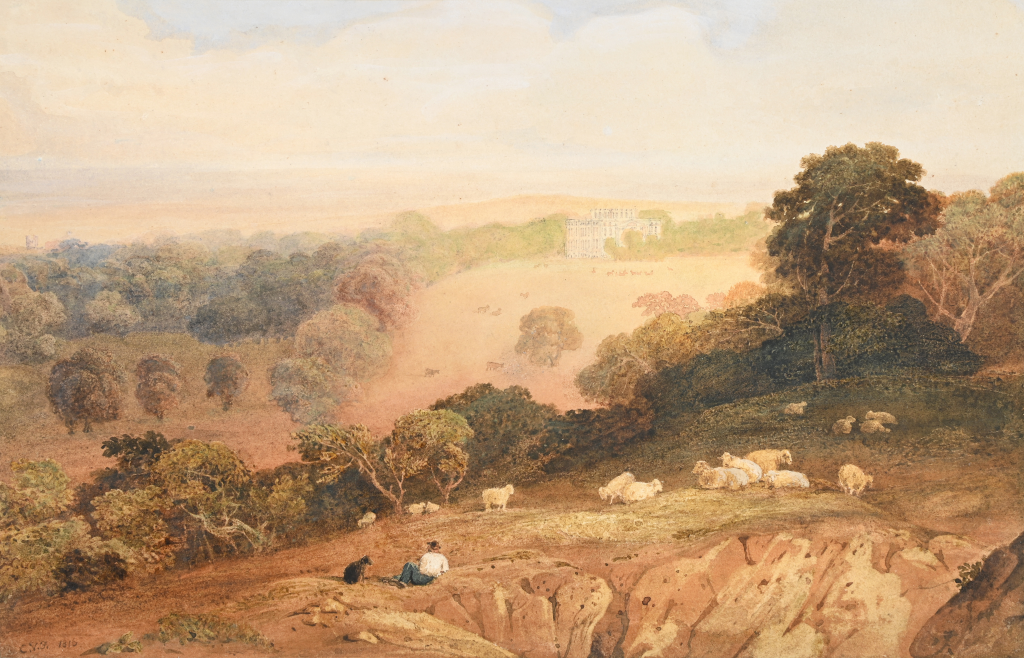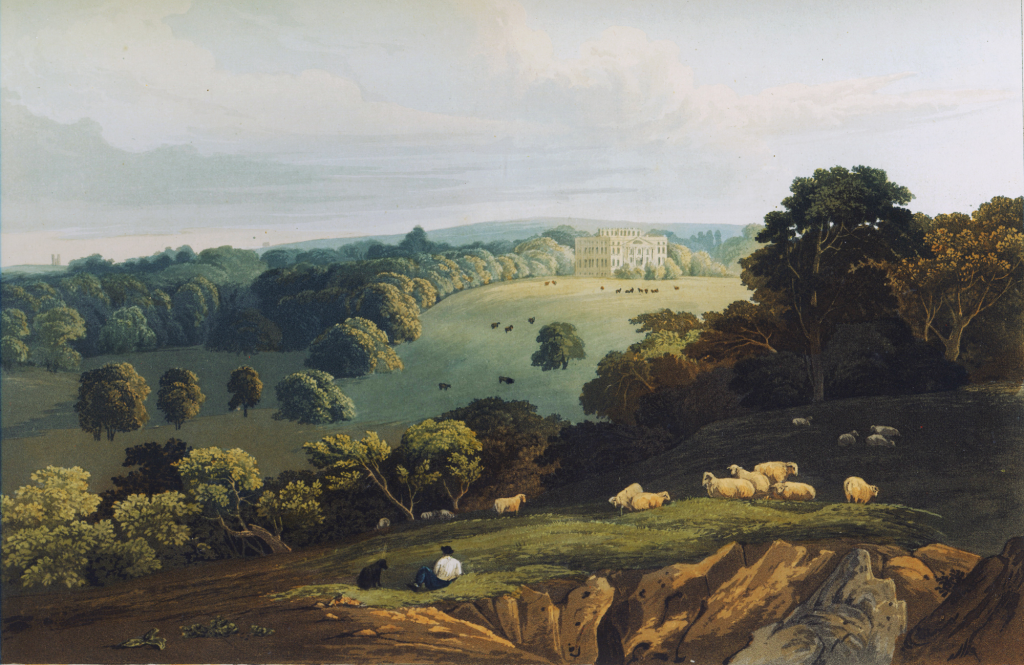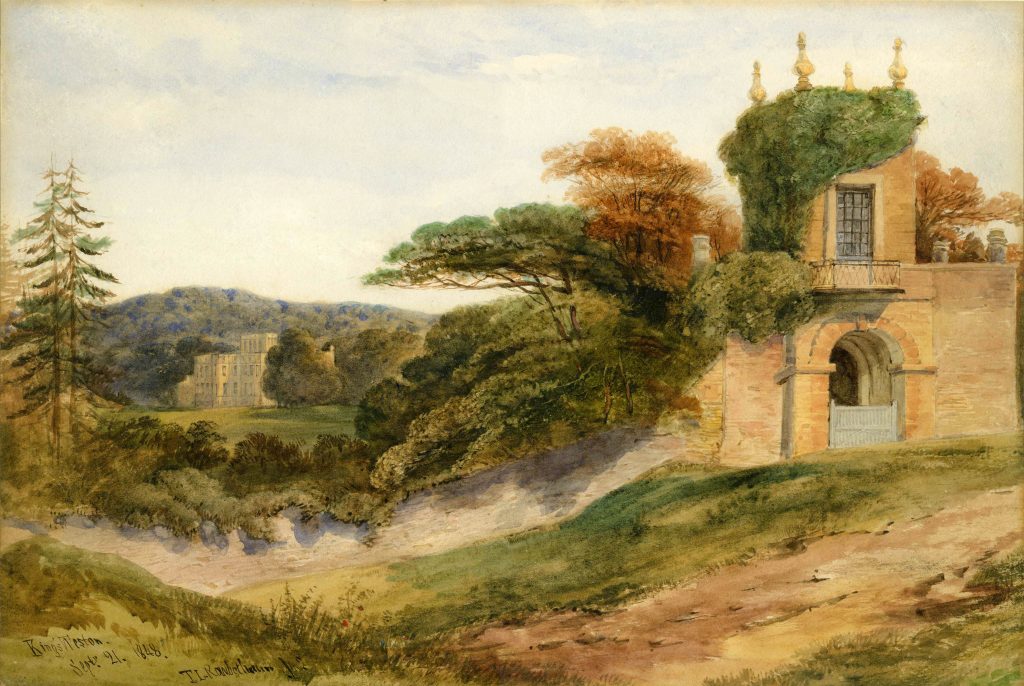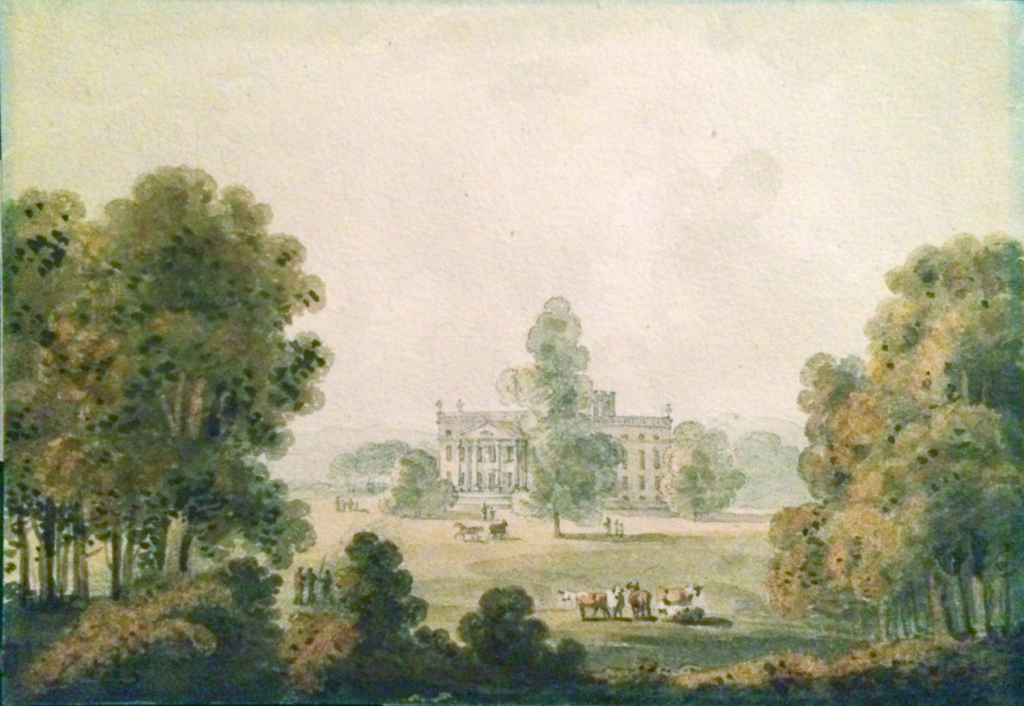Another artwork with Kings Weston Interest has come our way recently. The panoramic views across the waters of the Severn to the north were matched by the rolling landscape framing the Avon and its gorge to the south. Both proved popular locations for picturesque paintings throughout the Eighteenth and Nineteenth Centuries. The recently uncovered work shows the view up the Avon from Shirehampton Park, a spot much-favoured by artists. Here, the view across Horseshoe Bend was attractively framed by trees along the parkland edge. Distant views of Cook’s Folly, a tower with romantic associations, added distant intrigue to the scene.

The painting is likely to date from the 1830s, before the twin towers of the Clifton Suspension bridge rose to punctuate the skyline. Our artist, whoever they might have been, has added a sentimental vignette as foreground interest. A young couple, the gent apparently an artist working on his own version of the same view, have been approached by a gentleman and his dog. It may be that, in his red tunic and walking stick, he is an old soldier begging for money, so adding a poignant human touch in the midst of such natural drama.







